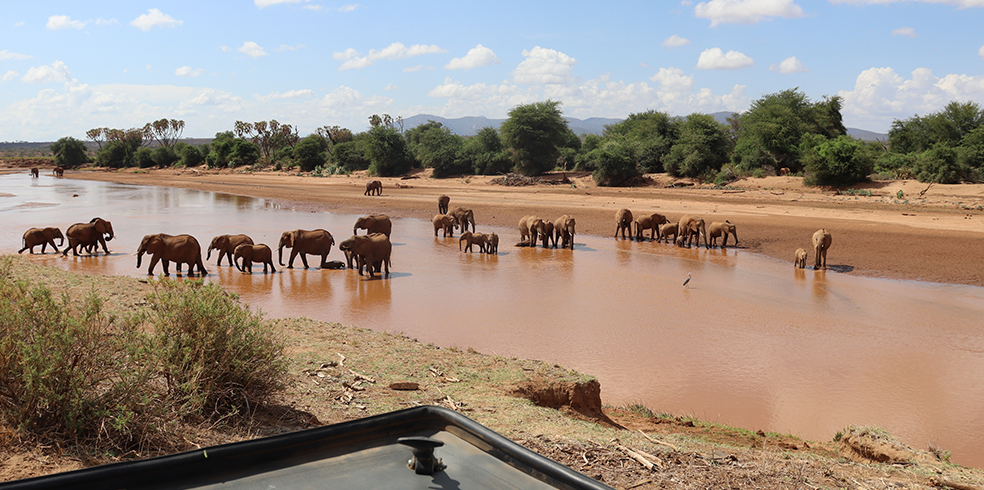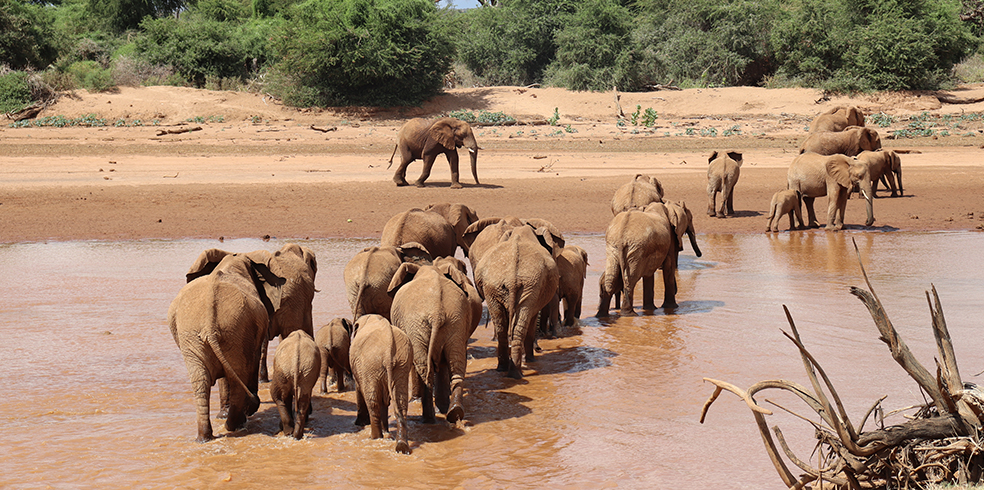Former STE intern, Meha Kumar, shares one of her special encounters with elephants in Samburu National Reserve and gives us a glimpse into some of the discoveries she made during her internship.
There they were, the Hardwoods family, a group of 43 elephants in the shallow waters of the Ewaso Nyiro river, cooling off, mucking around in the mud and drinking.
On the further end of the riverbank, was a beautiful young mother, mid-twenties with her five year-old calf. A few yards away stood three majestic bulls – Lengishu, Jonathan and Google – who all had their eyes set on this female elephant named Cherry.
I wondered why Cherry wasn’t drinking with her group. As Davido, one of STE’s Research Assistants, and I observed a little longer, we discovered that Cherry was in oestrous (a period of reproductive activity) and that the bulls had sniffed her out using their incredible sense of smell.
STE’s Long Term Monitoring (LTM) team closely monitors elephants on a daily basis and collects data on the individuals sighted, including those in musth and oestrus.
With this data, studies can be carried out to determine paternity from the DNA; in this case, if lucky, which bull won Cherry’s heart!
A few moments later, the three bulls circled her, one by one, taking in her scent and fighting for her undivided attention while her calf watched from nearby.
Just as we thought that one of the bulls would mount Cherry, she rumbled…loudly and deeply. All of a sudden, her family, the Hardwoods, moved quickly to surround her. While the bulls walked away with dashed hopes, I wondered what did Cherry say to her family to make them come so quickly? I later learnt that oestrus females don’t tolerate non-musth males which might have been why Cherry called in ‘the cavalry’. Another interesting fact I learned during this experience is that elephants use different vocalisations to communicate amongst each other.
Mickey Pardo, a postdoctoral researcher from Colorado State University in the US, with the help of STE’s David ‘Leaderboard’ Lolchuragi, has been ‘eavesdropping’ on elephant conversations in Kenya’s Samburu National Reserve, as part of his study on African elephant vocal communication. Decoding these vocalisations will not only give the world a rare glimpse into elephant society but is also promising for conservation and management actions such as mitigating human-elephant conflict and reintroducing orphaned elephants back to the wild.
Can’t wait for the findings of this study!



